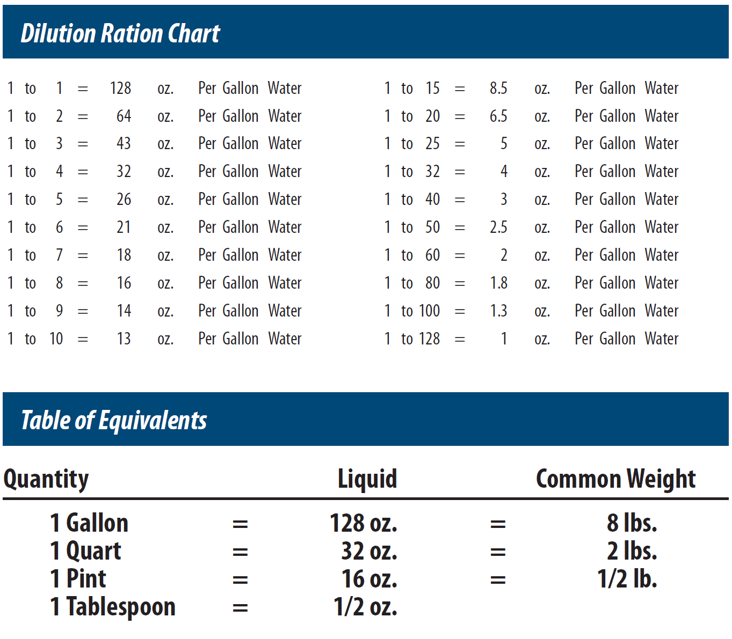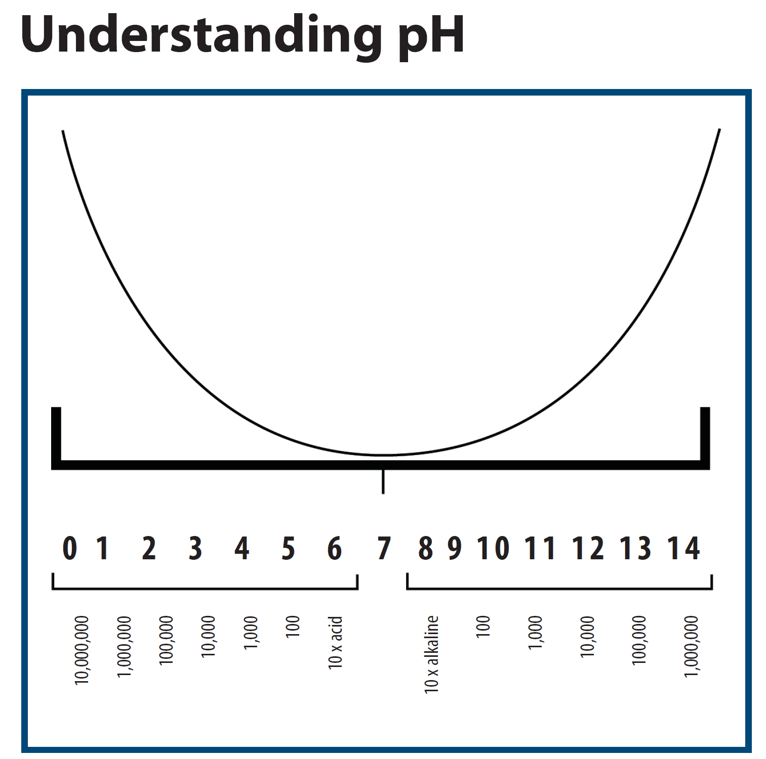
To better understand pH there needs to be a primary knowledge that:
- pH is the measurement of how acidic or alkaline a liquid is. It will either be neutral (water), acid, or alkaline.
- The pH scale ranges from 0 to 14 with neutral in the middle at 7.
- As you move a step away from 7 in either direction the acidity or alkalinity of the solution increases by 10 times. This means that 8 is 10 times the alkalinity of 7. A pH of 9 is 100 times the alkalinity of 7 (10x10) and 10 is 10,000 times the alkalinity (100x10). When we finally get to a pH of 14 it is ten million (10,000,000) times as alkaline as water. The same is true for the acid side of the scale. Please note the chart.
- pH applies only to water-based solutions. If a solution does not contain water it has no pH reading.

In shopping for cleaning chemicals you may be tempted to look at two competing chemicals and judge their cost by the price on the container. For example, if one gallon of prespray costs $12.95 and the other one costs $16.95 then we may mistakenly assume that the $12.95 gallon is cheaper. It may be that the one with the higher price is actually much cheaper to use. Following is a formula to figure out exactly how much any chemical costs per gallon or ready to use (RTU) solution.
Let’s take an example. If a gallon of Traffic Slam concentrate costs $24.60. The directions say to add 4 ounces per gallon of water. This means that the dilution ratio (see the chart) is 1 to 32. In other words, you would add one gallon of traffic slam to 32 gallons of water to make 33 gallons of ready to use solution. Now, let’s apply these numbers to the formula.

Use this to determine the true cost of the chemicals you are purchasing. Remember: Cost is only one way to judge a chemical - performance must also be evaluated.
-Scott Warrington
